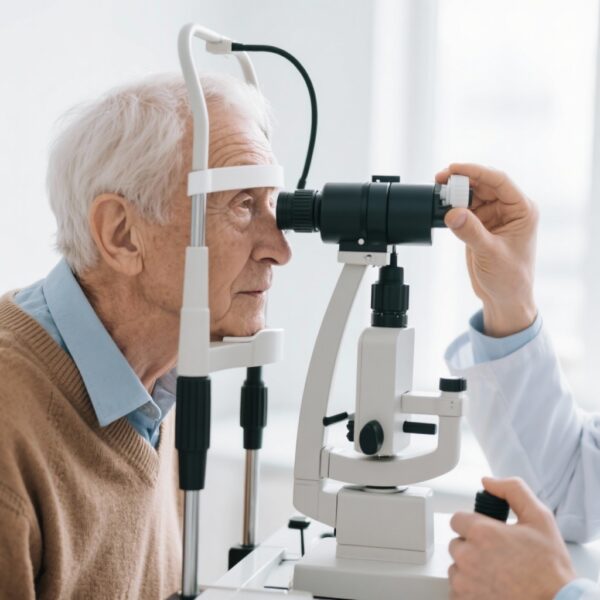Highlight
– Atropine induces stronger cycloplegia than cyclopentolate in preschool children, yielding higher spherical equivalent difference (DSE).
– Use of atropine results in less myopic refraction compared to cyclopentolate and may avoid overestimation of premyopia.
– Differences in prevalence of refractive states highlight clinical impact on early refractive error diagnosis and management.
– The study is a large propensity score–matched post hoc analysis drawing on two major population-based cohorts.
Study Background and Disease Burden
Accurate measurement of refractive error in preschool children is vital for early identification of visual problems and for guiding interventions that can influence long-term ocular health. Cycloplegia—pharmacological paralysis of the ciliary muscle—is necessary to obtain reliable refraction by eliminating accommodation that can mask hyperopia or simulate myopia. However, the extent of cycloplegia achieved depends on the agent used.
Premyopia, defined as a refractive state at risk of progressing to myopia, is a critical condition to diagnose early given the increasing global burden of myopia and its associated ocular complications. Misclassification due to inadequate cycloplegia may either delay intervention or prompt unnecessary treatment.
Atropine and cyclopentolate are commonly used cycloplegic agents but differ pharmacologically. Atropine, applied over several days, causes prolonged cycloplegia, whereas cyclopentolate offers rapid but shorter duration cycloplegia. Understanding how these differences impact objective refraction and the prevalence estimation of refractive states such as premyopia is essential for optimizing pediatric eye care.
Study Design
This investigation is a post hoc analysis utilizing data from two large, population-based studies: the 2024 Preschool Children Refractive Development Pattern and Influencing Factors Study (PRDP-IFS) and the 2013-2014 Elaborative Shanghai Childhood Ocular Refractive Development Study (E-SCORDS).
– PRDP-IFS cohort included 773 children (1524 eyes) who underwent cycloplegia using 1% atropine eye drops administered twice daily for 4 days with an additional dose on day 5.
– E-SCORDS cohort included 988 children (1524 eyes) treated with 1% cyclopentolate, administered in two doses five minutes apart.
Propensity score matching was employed to align groups for relevant demographic and baseline factors, ensuring comparability. Objective refraction was assessed using an autorefractor measuring spherical equivalent (SE) before and after cycloplegia.
The primary outcome was the difference between noncycloplegic and cycloplegic SE (DSE). Secondary outcomes included the distribution of refractive states post-cycloplegia, categorized as moderate to high hyperopia, low hyperopia, premyopia, and myopia.
Key Findings
The combined analysis included 1761 children and 3048 eyes, with equal numbers of eyes in each treatment group (1524 eyes).
– Baseline noncycloplegic SE was similar between groups: 0.30 D (SD 0.92) for atropine and 0.31 D (SD 0.76) for cyclopentolate (P = .72), confirming successful matching.
– The mean DSE, indicating the refractive change after cycloplegia, was significantly greater in the atropine group compared to the cyclopentolate group: 1.56 D (SD 0.72) versus 0.97 D (SD 0.70), respectively (mean difference 0.59 D, 95% CI 0.54 to 0.64 D; P < .001). This suggests atropine induces more complete cycloplegia.
– Regarding refractive states post-cycloplegia:
– Moderate to high hyperopia was significantly more prevalent in the atropine group (7.2%) than cyclopentolate (2.7%), difference 4.5% (95% CI, 2.9%-6.0%, P < .001).
– Low hyperopia was also higher with atropine (82.8% vs 74.0%), difference 8.8% (95% CI, 6.0%-11.8%, P < .001).
– Premyopia was lower in the atropine group (8.7%) compared to cyclopentolate (21.6%), difference -12.9% (95% CI, -15.4% to -10.4%, P < .001).
– Myopia prevalence was not significantly different (1.3% vs 1.8%, P = .30).
These findings demonstrate that atropine leads to less myopic refraction measurements and fewer children being classified as premyopic. The more potent cycloplegic effect of atropine likely reduces accommodative spasm and latent hyperopia, which can mimic myopia or premyopia when using less complete cycloplegia.
Expert Commentary
The choice of cycloplegic agent profoundly affects diagnostic accuracy in pediatric refraction. This large and rigorously matched comparison confirms that atropine, with its prolonged and stronger cycloplegic action, provides a more accurate refractive profile in preschool children compared to cyclopentolate.
While atropine requires multiple days of administration and may have side effects such as photophobia and near vision loss, the greater diagnostic certainty may justify its use, especially for research or detailed clinical assessment of refractive development and premyopia.
Limitations include the lack of evaluation within the same individuals, which may introduce residual confounding despite matching. Furthermore, cyclopentolate’s quicker onset and practicality still make it valuable for routine clinical use. The balance between convenience and cycloplegic depth must be individualized.
Notably, overestimation of premyopia using cyclopentolate could lead to overtreatment or misallocation of resources toward children who may not be at risk for myopia progression. Hence, clinicians should consider cycloplegic choice thoughtfully when screening for refractive errors in young children.
Conclusion
This study robustly demonstrates that atropine induces stronger cycloplegia than cyclopentolate in preschool children, resulting in less myopic refraction and a potentially more accurate estimate of premyopia prevalence. These findings underscore the critical role of cycloplegic agent selection in pediatric refractive assessment.
Future research comparing both agents in the same children and evaluating the impact of cycloplegic choice on longitudinal refractive outcomes and management decisions will be valuable. Meanwhile, practitioners should weigh atropine’s diagnostic precision against its logistical demands, tailoring cycloplegia approaches to clinical contexts.
References
Wu H, Wang Y, Lu Q, Rose KA, Morgan IG, Ni Z, Xiang K, Qi Z, Zhang B, Wang J, Chen J, Xu X, He X. Atropine or Cyclopentolate to Diagnose Premyopia in Preschool Children. JAMA Ophthalmol. 2025 Sep 25:e253243. doi: 10.1001/jamaophthalmol.2025.3243. Epub ahead of print. PMID: 40996735; PMCID: PMC12464850.
Morgan IG, Rose KA. Myopia: prevalence and progression. Br J Ophthalmol. 2022;106(8):1062-1066. doi:10.1136/bjophthalmol-2021-319116.
Prousali E, Bessant DA, Li W, et al. Cycloplegic agents in pediatric refraction – a review. Optom Vis Sci. 2021;98(7):703-711. doi:10.1097/OPX.0000000000001720.



